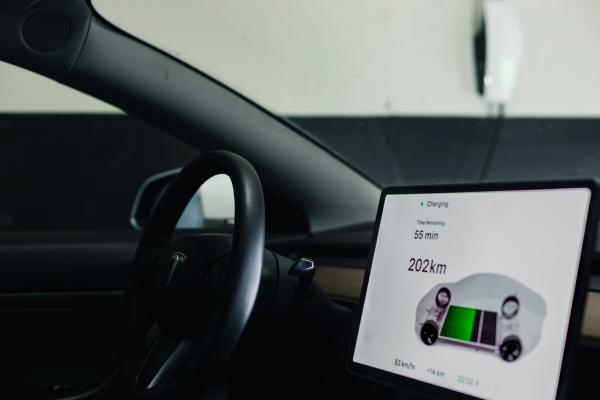Maintaining an electric car vs an ICE car

EV or ICE? If you're considering an electric car or are new to the electric life, then the maintenance cost is probably just one of the many things you are researching.
Are electric cars easy to maintain? We’ve gathered all the info, so all you need to do is grab a brew and get comfy. It’s time to get clued up on all thing’s electric car maintenance.
The similarities
Let’s start with the stuff that won’t change whether you go EV or ICE.
MOTs and servicing
Even though it’s powered differently, it’s still a car and car’s need regular checks to keep them running safely and effectively. So, you’ll still need to MOT your EV.
- If you get a sparkly new EV on a one-to-three-year lease plan, you won’t have to bother with an MOT
- With a four-year lease plan, you’ll need to MOT it in the final year - it’s a legal requirement that any car over 3 years old gets a yearly MOT
- Annual servicing is a requirement of any ZenAuto lease agreement – whether you get a petrol, diesel, hybrid, or electric car
It’s time for a shameless plug. Did you know that we offer a shiny maintenance package that spreads the maintenance cost and gives you that added financial security?
Simply add the maintenance package on when you build your new car plan and pay monthly for tyre TLC (FYI tyre care doesn’t change for EVs or ICE cars), MOTs, and all your EV car servicing needs.
The differences
There are quite a few differences between the upkeep of an electric car and its petrol/diesel counterparts. Most of the differences will actually save you money and time – nice!
Less parts = less to go wrong and pay for
EVs typically require less maintenance than traditional cars as there are fewer moving parts to eventually fail and replace. How difficult any machine is to maintain is usually directly related to its number of moving parts.
Here are just a few of the standard petrol/diesel parts that an electric car doesn’t have:
- An engine
- An exhaust
- Pistons
- Fuel pumps
- Spark plugs
You’ll have less car chores to tick off your to do list, like taking it for an oil change or filter change. This means you’ll have more time and money for the things you love in life.
Regenerative braking as standard
All EVs have some form of regenerative braking, a type of braking which uses the electric motor to slow the car down whilst putting some electricity back into the battery.
Replacement brake pads and discs are a huge expense, but an EV’s regenerative braking system takes a lot of the strain, putting less wear and tear on these parts. Braking becomes more efficient, with the discs and pads in an EV generally lasting a lot longer.
Simple gearboxes
Most electric cars are automatic, meaning there are fewer mechanical elements to maintain. There’s no expensive clutch to replace, and there are fewer cogs, fluids, and other bits to wear out.
Unlike standard automatic petrol and diesel cars, most electric cars run with a single gear. This is because the electric motor provides all the torque and power need in one rpm (revolutions per minute).
Basically, a simple gearbox means there’s less to go wrong in the long term. There’s a bit of theme going here, hey?
Battery maintenance
Let’s talk electric car battery maintenance:
- On average, the batteries that electric cars run off need very little maintenance
- EV drivers can expect upwards of 10 years or 100,000 miles of use before their car’s battery needs an upgrade
- In the case of leasing a new EV, battery degradation really shouldn’t worry you as you’ll only have the car for a max of four years
- Most electric car batteries are under warranty for around eight years.
There are, however, a few ways you can keep your battery running smoothly and improve its longevity:
1. Don’t overcharge it
- Fully charging your EV to 100% can be taxing on the battery pack
- It’s recommended that you charge your EV up to 80%
- Then let the battery drain to no lower than 20% before recharging
Many new electric cars will let you set a charging maximum, making it easier to preserve your battery life.
2. Let your battery cool before charging up
If you’ve just been on a long journey, it’s best not to charge it the second you stop. Leave the car to cool down before plugging it in as it’s better for the battery.
3. Take precautions in extreme heat
Exposure to extreme heat and cold can have a negative effect on battery life. You may find you get fewer miles as a result.
- If you’re out and about on a hot day, be sure to park your EV in the shade.
- On a super chilly day, drive at a steady speed and avoid abrupt acceleration and braking.
- Cover your car either in a garage overnight or just under a cover
- This will help keep the car, and its battery, warmer
- The warmer the car is, the more likely it is to hold its charge
Overall, maintaining an EV should be easier, and often cheaper, than the upkeep of a petrol or diesel car. If you’re keen to know more about the electric world, give our EV Info Zone a read.
Got a couple questions for the team? Reach them on email via [email protected], give them a ring on 0113 468 5377 or catch them on Live Chat.
Posted on: 19th January 2023




